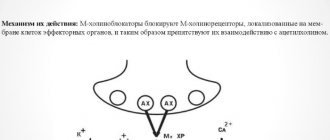Cystoscopy of the bladder is the examination of the walls of the urethra, bladder, and ureteric outlets.
The study is carried out using special optics to diagnose various changes and diseases.
During the procedure, the doctor has the opportunity not only to identify the pathology, but also to perform a biopsy to take a biopsy sample and, if foci of the disease are identified, to carry out therapeutic measures in the form of administering medications.
The study is also unique because, thanks to it, the doctor examines the organ cavities, but also evaluates the condition of the kidneys based on the specific discharge from the ureters.
We can say that this opportunity becomes an auxiliary diagnostic method for identifying prostate pathologies.
But this plays a special role when preparing an operation to remove a kidney, when the condition of the remaining one will be decisive.
When is it carried out?
There is no age limit for conducting the study. Therefore, it is the main method for identifying certain diseases of the genitourinary system, due to its high information content.
Other methods, for example, ultrasound, although safer, do not provide the doctor with sufficient information.
In addition, as we noted above, during the course of this study, a biopsy can be performed for subsequent histological analysis.
If stones, tumors, or polyps are found during the examination, they can be destroyed and removed.
Having discovered ulcerative pathologies of the organ mucosa, the doctor cauterizes the damaged areas.
As for tumors in the prostate and inflammation in it, using research, the doctor determines how the process has spread to neighboring tissues, sees a picture of the specific involvement of the organ and urethra in the disease process.
Features of the procedure
During cystoscopy, the doctor conducts a visual examination of the bladder, paying special attention to the bottom of the organ and the orifices of the ureters. In addition, the specialist has the opportunity to administer the drug directly to the site of inflammation, perform tissue excision, and remove small stones or tumors. All pain that occurs in the urethra after the procedure disappears within a few days.
If we compare cystoscopy with ultrasound, x-rays and other non-invasive examination methods, it wins in terms of information content, since it allows us to obtain the most complete picture of the disease. During the procedure, the doctor can examine the inner surface of the bladder and urethra, which will clarify the diagnosis, establish the location and extent of the pathological process, and determine further treatment tactics.
Why is it worth having a cystoscopy?
The method allows you to obtain the most complete and reliable information about the condition of the patient’s urinary system.
Modern cystoscopes cause minimal discomfort and are not capable of causing chronic inflammation or infection.
Diagnosis is carried out by qualified doctors. Specialists act very delicately and carefully, so there is no risk of injury to the urethra or bladder.
Cystoscopy of the bladder has an affordable cost. You can check the current price by phone or through the website.
Indications and contraindications
The study is carried out for both diagnostic and therapeutic purposes. In the first option, it is carried out in a number of cases, including:
- Often worsening cystitis;
- Suspicion of a neoplasm;
- Overactive bladder;
- Chronic pain syndrome in the pelvic area;
- Detection of atypical cells in urine;
- Dysfunction when urinating - pain, difficulty, etc.
How is the treatment study indicated for:
- Excision of tumors;
- Neutralization of bleeding;
- Destruction and extraction of stones;
- Biopsies;
- Administration of medications.
In addition to the above, the procedure helps restore urinary tract patency.
The study is contraindicated if the patient has manifestations of inflammation of the genitourinary organs, as well as in case of damage to the urethra.
Alternative to cystoscopy
Cystoscopy allows you to gain direct access to the internal area of the urinary tract, and therefore, if there are contraindications to this procedure, it is quite difficult to replace it with something else.
The diagnostic function of cystoscopy, to some extent, can be taken over by research methods such as ultrasound, MRI or cystography (an x-ray examination during which the bladder is filled with a special radiopaque substance). If the ban on cystoscopy applies only to the bladder, the patient is prescribed urethroscopy - examination of the urethra using a urethrocystoscope.
The manipulative functions of cystoscopy to remove stones or neoplasms, perform electrocoagulation or collect biomaterials for research cannot be replaced by anything other than direct surgical intervention.
Urologist-andrologist, urologist of the highest category Nizamutdinov Vadim Munirovich
How to prepare
Preparing for the study cannot be called difficult. The patient undergoes a urine test and some other tests. This is necessary to exclude contraindications.
Medicines that are responsible for reducing the rate of blood clotting taken by the patient are usually eliminated several days before the test.
There should be no sexual contact on the eve of the study.
Men are examined using, as a rule, spinal or general anesthesia, due to their anatomical characteristics.
For women, the procedure is usually performed under local anesthesia, which is applied to the tube of the device (endoscope).
Before the procedure, you need to have a bowel movement and thoroughly clean your genitals.
Everyone, without exception, must stop eating twelve hours before and drink three hours before.
How to prepare for cystoscopy
First of all, this is the organization of a psychological mood - the patient needs to explain that the procedure is a necessity. There is no point in worrying about the pain of the process, since cystoscopy is performed using local anesthesia. Although it does not completely relieve discomfort, the procedure becomes quite tolerable. In addition to psychological preparation, you will need to follow other rules:
- Careful preliminary hygiene is important. Before the examination, you should wash yourself, while women use top-down movements, while men need to move back the foreskin, and then treat the urethral opening.
- 24 hours before the procedure, you should avoid eating heavy meals and drinking alcohol.
- If general anesthesia is to be used, food and drink are not taken starting in the evening.
- For cystoscopy, choose comfortable clothes without fasteners; it is also better to leave jewelry at home.
- Should I empty my bladder before the procedure? There are no strict restrictions on this matter; even if the organ is emptied, the doctor will fill it with a special solution.
Important. If the pain during the procedure becomes unbearable, you should immediately warn the treating specialist. It is better not to drive after cystoscopy.
Carrying out
The subject undresses and lies on his back, legs bent at the knees. The doctor should explain to him how the procedure is performed and what sensations may arise during it.
The external genitalia are treated with an antiseptic, and the device is lubricated with glycerin.
Men are given anesthesia into the urethra using a special syringe, and wait for the analgesic effect to begin. This continues for up to 10 minutes.
Depending on the chosen toolkit, there are options:
- Harsh intervention;
- The intervention is flexible.
Rigid involves the use of a rigid device that is mounted on a metal tube. Such a device has pros and cons. On the one hand, it straightens the tissue well, which is important for examination; on the other hand, it is more traumatic and causes significant discomfort to the patient.
Do not use a rigid device during pregnancy or with significant tumors localized in the pelvic organs.
A tube of the device is inserted into the urethra and a liquid is supplied to wash and straighten the folds of the organ membrane.
In order to supply and drain liquid, a special tap is connected to the device. For better visualization, the organ should be washed before the study. The water used to rinse the organ is collected for later study.
Flexible research involves the use of a flexible instrument. This is a movable polymer tube, at the end of which there is a lamp and optics.
The device easily passes into hard-to-reach places, which increases the information content of the study, and also significantly minimizes the possibility of injury and pain.
The advantages of the flexible option are obvious, so in modern medical practice it is replacing the hard option.
For children, a flexible version of the procedure using a pediatric endoscope is indicated.
Cystoscopy for bladder cancer
Cystoscopy for bladder cancer is the “gold standard” for diagnosing bladder tumors. Thanks to this diagnostic method, the doctor can use his “eye” to examine the walls of the bladder and see cancer.
Equipment for cystoscopy
To perform cystoscopy, a thin cystoscope tube is used, equipped with optical and lighting elements, which is inserted into the bladder through the urethra. Various types of cystoscopes can be used for examination, but, fundamentally, they are divided into two types: rigid (inflexible) and flexible . The choice of one type of cystoscope or another largely depends on the equipment of the clinic, the preferences and skills of the surgeons. In women , as a rule, cystoscopy for bladder cancer is performed with a rigid cystoscope. In men, both rigid and flexible instruments can be used for these purposes.
The cystoscope may be equipped with additional ports through which instruments are inserted into the bladder to perform various procedures, such as cauterization or cancer biopsy.
Drawing. Flexible cystoscope.
Drawing. Cystoscopy for bladder cancer using a flexible cystoscope.
Drawing. Rigid cystoscope.
Drawing. Cystoscopy for bladder cancer using a rigid cystoscope.
Anesthesia for cystoscopy
The procedure can be performed under local, spinal or general anesthesia. Local anesthesia is provided by injecting a special solution or gel into the urethra. With general surgery, you will sleep throughout the entire period of cystoscopy. Spinal anesthesia involves injecting an anesthetic into the spinal canal. In this case, complete anesthesia of the body below the injection site is achieved while consciousness is fully preserved.
How to prepare for cystoscopy?
Before the procedure, you must undergo a standard examination, including a general blood and urine test, biochemistry, ECG, etc. If necessary, additional tests may be prescribed at the discretion of the doctor. Urine must be sterile.
Before cystoscopy, in most cases, an antibiotic is prescribed to prevent infection. Tell your doctor if you are taking blood thinners . Cystoscopy with biopsy may be associated with complications such as bleeding. Stopping these medications 5-7 days before the procedure will help reduce the risk of complications. In some cases, discontinuation of the drug is not required.
If cystoscopy is planned under general or spinal anesthesia, you are prohibited from eating or drinking .
The procedure is performed on an outpatient basis, and upon completion you will be able to go home.
What happens during cystoscopy?
A bladder examination is performed by a urologist in a specially equipped office. An hour before the procedure, you may be given sedatives to help you relax. A catheter is placed in the vein to administer medications and fluids.
You will be positioned on the operating table on your back with your legs apart and bent at the knees, placed on special stands. The genital area is cleaned with an antiseptic solution , and the abdomen and thighs are covered with sterile material.
The cystoscope is treated with a lubricant (lubricant) for more comfortable insertion into the urethra. The bladder is filled with liquid to straighten the walls and clearly see the entire mucous membrane. In addition to examining the bladder, the urologist can perform a biopsy of areas of the mucous membrane suspicious for cancer , and the resulting tissue is sent to the laboratory for examination under a microscope.
Drawing. Biopsy for bladder cancer.
Currently, fluorescent cystoscopy for bladder cancer, which allows increasing the diagnostic value of this procedure. More detailed information about fluorescence cystoscopy for bladder cancer can be found in the article “Photodynamic diagnosis of bladder cancer.”
What will you feel during a cystoscopy?
Most people describe their sensations during cystoscopy under local anesthesia as uncomfortable . As the instrument is inserted, you may feel a burning sensation or feel the urge to urinate. As your bladder fills with fluid, you may feel cold or have an unpleasant feeling of fullness. Try not to strain your anterior abdominal wall, relax and breathe deeply.
If cystoscopy is performed under general anesthesia, you will sleep and not feel any pain.
During spinal anesthesia, you may experience pain when the needle is inserted into the spinal canal and a slight burning sensation when the anesthetic is injected into it.
Complications of cystoscopy for bladder cancer
Cystoscopy for bladder cancer is a relatively safe procedure that is not characterized by serious complications. Cystoscopy is associated with a risk of complications such as infection, bleeding, or complications of anesthesia.
Antimicrobials are used to prevent infection .
The risk of bleeding is small and occurs more often during a biopsy. In the vast majority of cases, it stops on its own and does not require additional medical intervention.
Swelling of the urethra and bladder neck may often be observed, which is accompanied by urinary retention or discomfort during urination. As a rule, this condition lasts no more than two to three days.
Some men may experience slight swelling of the scrotum, but this will go away over time.
After cystoscopy for bladder cancer
The duration of the recovery period after cystoscopy depends on the chosen method of pain relief. After receiving local anesthesia, you will be able to go home shortly after the procedure.
After general anesthesia, you will be sent to the recovery room and after 2-3 hours, when consciousness is fully restored, you can go home. After spinal anesthesia, the sensitivity of the lower extremities is restored in 4-5 hours, then you can leave the clinic.
After the procedure, you are prohibited from driving , so take care in advance about how you will get home.
At home
At home, you will be tempted to visit the toilet more often than usual, and as we said, you may experience discomfort and a burning sensation when urinating. Drinking as much fluid as possible will help reduce side effects and minimize the risk of infection.
Contact your doctor if:
- If your urine remains red after urinating several times or contains a large number of blood clots;
- If you are unable to urinate for more than 8 hours;
- if you have fever, chills, or severe pain in the pelvic or lumbar region;
- If you have signs of a urinary tract infection: false urges, foul-smelling or cloudy urine, frequent painful urination.
Back to articles
Study in women
Typically, the test is easier for women than for men. The reason for this is the peculiarity of the urethra, short and straight.
General anesthesia is not required; a local option is used: an anesthetic is applied to the device.
Difficulties may arise if there are significant tumors in the uterus and pregnancy in its later stages, when the bladder is compressed by the uterus.
It must be understood that the procedure in the second case is performed only for health reasons: there is a high probability of provoking a spontaneous abortion.
What is this?
Endoscopy of the bladder in women and men is a diagnostic procedure that also provides examination of the urethra and ureters using optics to identify the pathological focus. The purpose of its implementation is diagnostics, but it also makes it possible to collect biomaterial for further microscopic examination. In addition to examining the urinary organs, this examination allows you to study the performance of the kidneys. It is often prescribed as an additional diagnostic examination to identify inflammatory processes and prostate tumors.
Study in men
The anatomical features of a man (the length of the urethra can reach over twenty centimeters) cause certain difficulties in conducting the study.
The physician is required to be highly qualified and accurate. Mainly, this plays an important role at the stage when the device is inserted.
An anesthesiologist must be present during the examination, as there may be a risk of severe pain when it is necessary to administer an anesthetic drug.
Biopsy
We will separately talk about the procedure for taking a biopsy for subsequent histological examination.
The biopsy is taken in several ways:
- Biopsy is cold. The material is removed using special forceps inserted through the device.
- TUR biopsy. This is cutting off a piece of tissue or completely removing the tumor using an electrocoagulator, which is also carried out through an endoscope.
Both methods have pros and cons.
With the cold option there is minimal risk of damage to the organ wall, but there is little information about the spread of the tumor.
Cholangiography
TUR biopsy, on the contrary, provides comprehensive information about the development of the tumor and negates the risk of bleeding. The downside of this option is the high risk of injury.
Types of cystoscopes
To carry out the procedure, a cystoscope is used, which is a special design made of a thin tube with optics built into it, which transmits the resulting image to an external monitor. A cystoscope is inserted into the bladder through the urethral canal, sequentially examining all parts of the organ. To carry out the procedure, two types of structures have been developed:
- Rigid cystoscopes . The optical system of the device is designed to observe and assess the condition of the organ directly with the eyes without displaying the image on a large screen.
- Flexible cystoscopes. The image is transmitted to the monitor thanks to the special features of the optics.
Important. In modern medicine, rigid structures are extremely rarely used, since they have a number of negative features - their insertion and movement through the body causes pain, and the quality of visualization is not as accurate as that of flexible cystoscopes.
Complications
After the procedure, blood discharge may appear in the patient’s urine for several days.
Not excluded:
- Burning;
- Discomfort in the urethra;
- Pain when urinating.
To quickly resolve these symptoms, you need to consume plenty of fluids during the first few days.
Among the complications that may appear after the study are the following:
- Acute cystitis;
- Damage to the organ wall;
- Bleeding;
- Injury to the urethra, some others.
Possible complications









